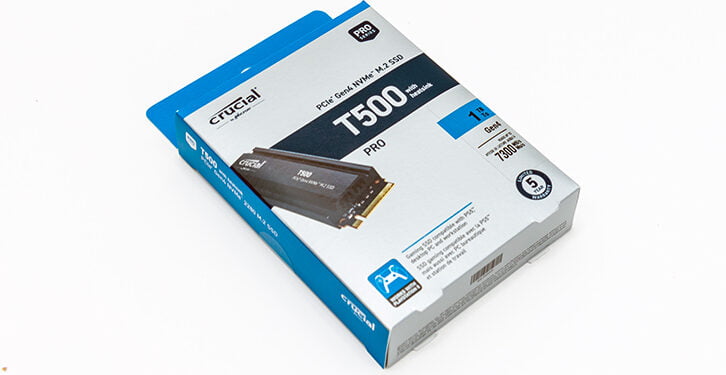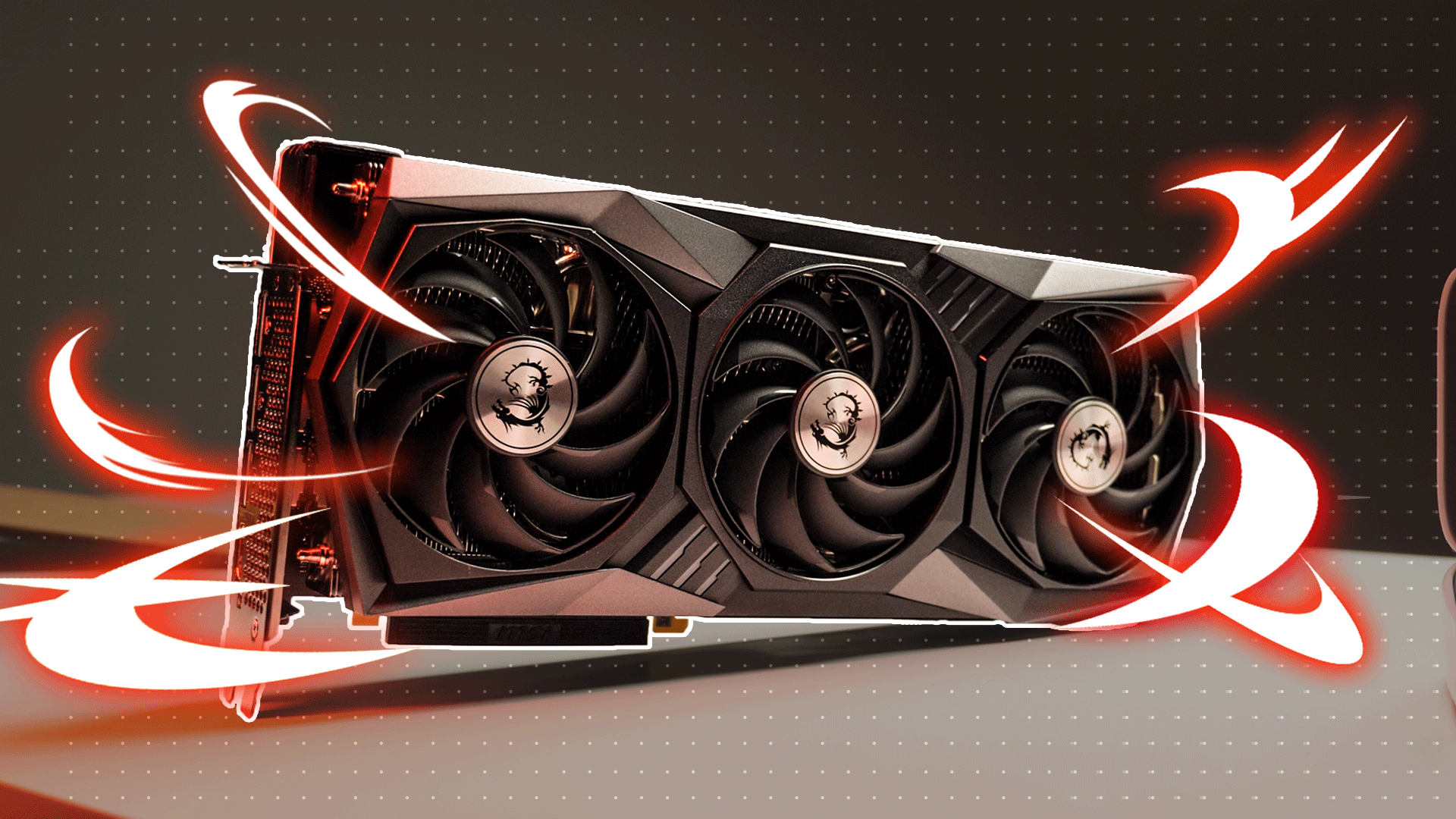
Much like its bigger brother the T705 series, the T500 comes in a rather attractive, albeit in a conservative way, shipping container. One that shows and tell potential buyers what it housed inside. As such the only issue we have with the T500’s box is the fact that it is, once again, a wee too easy to mix-up one capacity model with another. Put another way you have to pay attention lest you get to the checkout and realize you /gasp/ have a 2TB T500 in your hands and not the 500GB you ‘thought’ you were buying. Trust us. That excuse never works… even when it was actually what happened.

On the positive side, this more budget orientated Crucial T series drive does get the royal treatment when it comes to internal protection. That is to say it gets the same multi-layer plastic internals as the more expensive T705 series. As such, this is a drive that you can ship across town, the country or even the world and have very little worries over it not arriving in one piece.

Unfortunately, this sameness does continue when looking at the heatsink that some of the T500s come equipped from the manufacture with. Much like the T705 OEM Heatsink edition’s heatsink was a major step backwards compared to the T700, the ~7.4mm z-height, T500 OEM Heatsink edition also is disappointing compared to the noticeably cheaper P5 Plus.

As you can see it basically is the same heatsink as the P5 Plus series but once again they have swapped out the tried and true bolts for a friction fitment arrangement. Sure, the heat-pad is going to heat-up and help ‘stick’ the PCB to the low profile top half and sure, the heat-pad on the bottom of said PCB will help stick the U shaped bottom half of said heatsink together. Even sure. Friction fitment can indeed be more than adequate when done right. For example arrow wedged added to the top and bottom parts would make for a nearly as strong as bolts. Sadly, Crucial did not have their OEM do that. Instead at the end of the day all that is holding this heatsink together is hopes, dreams, and teeny tiny friction tabs that fit into the bolt holes of the original.

That is sub-optimal to say the least… and why we would once again be strongly inclined towards purchasing the nekkid / non-heatsink equipped version over the OEM heatsink models. That way you can pickup a known good heatsink that you know will not fail on you due to vibrations from… oh say 3 GPU fans located nearly on top of this drive. Which is a shame as this low profile heatsink is an otherwise proven design. One that has enough surface area to keep the drive cool (enough) under typical home usage scenarios, but not so large as to really cause (m)any compatibility issues.

Thankfully, that is about the only suboptimal component to this model. If one so chooses to take apart the heatsink and peak inside what they will find hidden under good thermal pads and a ESD protective layer is 3 excellent components.

The first is of course the full snortin’ B58R Replacement Gate TLC NAND ICs that are trucking along at a fantastic 2400MT/s. This is about the only NAND that we would find acceptable when paired with the Phison E25 controller. That is for the simple reason that the E25 is ‘only’ a PCIe 4.0 controller that only has 4 channels and not 8 channels. We typically dislike 4-channel controllers for all but tertiary storage roles as they typically are slow. Even by PCIe 4.0 standards they are slow. That however is not the case when dealing with a drive that pairs the E25 with full throttle B58R NAND.
Time for a bit of math to justify this seemingly controversial opinion of ours. A PCIe 4.0 lane is good for about 1.97GB/s. That certainly sounds ‘fast’ and was fast at one time. However when dealing with 4 lane devices such as the typical M.2 drive that is a theoretical bandwidth of about only 7.88GB/s. That certainly is decent and technically can be saturated via a 4-channel controller rocking 2000MT/s NAND… but in reality the NAND and controller also has its own overhead and (within reason) the easier it is to saturat a PCIe 4.0 x4 bus the better the real world performance will be. Thus having a controller capable of pushing a theroritical 9.6GB/s is a good thing as a lot more of that ‘theoretically’ wasted performance can be dedicated to internal housecleaning tasks, carrying out TRIM, even emergency NAND cleaning. All while still having enough performance left over to hit the PCIe 4.0 x4 bottleneck.

This more than enough to bottleneck the bus trend is carried forward when you look at the specs of this highly unusal ‘budget’ controller. What we mean is typically Phison uses a Big.Little approach to their SoC desing. Typically they have a ‘big’ dual (or tri) ARM Cortex R5 cores for the heavy lifting of dealing with realtime I/O requests and then 2 or 3 ‘little’ (32bit RISC-V AndesCore N25F based) CoXProcessor 2.0 co-processors cores also on the SoC to handle internal housecleaning.
The E25 does things a smidge more differently. Instead of the Big.Little approach the E25 makes use of four of those ARM Cortex R5 cores… and simply downclocks two of them to act as CoXProcessor 2.0 co-processors cores. This represents a massive shift in Phison SoC design and may hint and some prettttty exciting future E2x series controllers. After all, with only one core type to deal with, nothing says that when things get hot and heavy (aka high I/O demand) that one or more of those faux CoXProcessor cores could not upclock itself and help spread the load. Transforming a say 2+3 configuration into 3+2 or even 4+1 configuration… and vice versa during low I/O times to decrease total time required for internal housecleaning.
In the meantime, this may indeed be only a 4 channel based controller but it is easily one of the better, arguably best, consumer grade PCIe 4.0 controllers available on the market today. Especially with how (relatively) little Phison is asking for it. With all that said, this one-two combination would not be enough to change our opinion on most 4-channel controller based SSDs. Afterall, it may be a great and powerful controller. It may be paired with a great and powerful NAND… but if a good chunk of the already narrow (by 2024 standards) PCIe bus is taken up with RAM caching duties well that is a drive that is only good enough for handling budget limited tertiary storage requirements.
Once again the E25 is different as it can make use of onboard RAM cache and not have to rely upon PC’s DDR4/DDR5 memory bus. To be specific this 1TB’er comes with 1GB of dedicated onboard LPDDR4-4266 RAM. 1GB per TB is precisely how much the T700 made use of, and this amount of onboard cache is more than enough for all but the most demanding of scenarios. Scenarios that no home user budget/mainstream cross over drive has any right being place into in the first place.

Furthermore, Crucial has been working closely with Phison and since Micron has their backs (and phrases like “800lb Gorilla” are fitting when it comes to working with/against Micron) Phison has taken their strident feedback extremely seriously. So seriously that there have already been multiple firmware updates for the T500. The end result is the issues that some buyers ran into with the earlier firmware have basically become overcome thanks to the P8CR003 firmware that was easily downloaded and installed via Crucial’s Storage Executive program.
Needless to say these core components, along with timely firmware updates, more than make up for the press fitted heatsink… even if we would still opt for the non-heatsink model over this particular variant everyday of the week and twice on Sundays.










